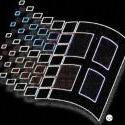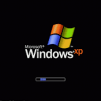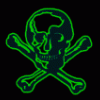
Yellow Horror
MemberYellow Horror last won the day on June 23 2018
Yellow Horror had the most liked content!
About Yellow Horror

Profile Information
-
OS
XP Pro x86
Recent Profile Visitors
2,041 profile views
Yellow Horror's Achievements
17
Reputation
-
I have the same issue on one of my XP-based systems also. It have an older hardware than the other one, on which the updater works. May this be incompatibility with extended CPU instrutions? The affected system supports MMX, SSE and SSE2 only.
-
RAID under Win 7, Disk Manager or Intel Rapid Storage?
Yellow Horror replied to Messerschmitt's topic in Windows 7
Windows software RAIDs are interchangeable with any PC with the same OS version (there may be issues when moving between different Windows versions such as XP and 7). Hardware RAIDs are interchangeable only with PC with the same or compatible hardware RAID controllers. In any case you should move all disks of a RAID at once to avoid risk of data loss. -
I personally use Dynamic Disks Raid 5 on my main home PC running XP (patched to support such a config) for about 10 years. During this time, i experienced two disk failures and some preventive disk replacements due to bad SMART reports, all times without any data losses. I also experienced the disk group breakage one time due to my own fault in using a third-party disk management tool. I was able to recover all my data by properly use of another piece of third-party software.
-
No. You are right, and my memory is failing me. Not Win2k, but NT 4 was the system that store grouped disks (named "multidisks", not "dynamic disks" at the time) configuration in the registry only.
-
The Win2k had a major issue of keeping the configuration data of dynamic disks group in the system registry only. So a system crash meant that you can't access your data without a third-party recovery tool. Since XP, the configuration data is stored on each disk of the group, and in more than one copy. So, the dynamic disks are now safe enough. Don't forget that "two" copy on a mirrored volume should be considered as "one" against any disaster that don't boil down to a disk failure. Malware, misuse, garbage data in the backup software data buffer by a high-energy space particle, or one of millions of other possible issues destroys both of mirrored copies at once.
-
There is no problem with JBOD+RAID config as long as a RAID controller is an extension board. Just connect your system drive to MB SATA port and go on. In case of on-board RAID controller, yes, you need to check if it allow such a config. I think, there is no need to purchase 2 spare disks in advance for a mirror in home usage. In most scenarios, if you experience 2 drive failures at once or in a short time, you already lost part or all of your data, and the second spare disk on hand can't prevent this. Rebuilding of a 10 Tb volume on a low-cost system may take days, so you may purchase another spare disk before it ends. Also, you definitely may use your RAID volume while it is rebuilding, if you need to. But it is highly recommended to not use it heavily, because this slows down rebuilding and so delay the time when your data will be "in safe" again.
-
Just another thing you need to know about Windows software mirrors: don't try to make more than one mirror volume at one pair of physical disks. Despite Windows disk management allows this, it has a serious design flaw: after a power failure or any other not scheduled system stop, it resynchronize all software-RAID volumes at once instead of one-after-another basis. If two or more soft-RAID volumes share a physical drive, the drive has a very hard work chasing its heads back and forth for many hours.
-
Yes. If your hardware or MB RAID controller fail, and you don't have identical substitute, returning your data may be tricky (but possible in most of the cases). In contrast, windows-mirrored data disks may be easily transferred to any other windows-based system, despite hardware difference. So, if the I/O speed isn't a limiting factor for you, the software mirror is the better solution.
-
You already receive good advices how to fix it: disable UEFI-mode and Secure Boot boot in your PC setup. Then Win'8 installer don't require GPT partition. So, i repeat my question: what is your trouble now, exactly?
-
What is your trouble now, exactly?
-
Desktop computer is only turning on for a few seconds
Yellow Horror replied to COKEDUDEUSF's topic in Hardware Hangout
In addition to jaclaz suggestions: check all heatsinks' fans to start turning when you power on the PC. If any of the fans don't start, clean it gently. If cleaning don't help, replace the fan. -
S.M.A.R.T. is almost useless in predicting how long your HDD will work flawless for you, despite many dumb "system monitoring" software pretend to use it this way. But, there is some parameters in the S.M.A.R.T. that are really useful in detecting failures of HDD itself or the data throughput channel, including PATA/SATA controller, cable and connections. Either may be the cause of delayed write failures. So, i prefer to see the S.M.A.R.T. report ("Attributes" page in terms of GSmartControl mentioned above) before do any further conclusions.
-
As far as i know, not. Using bridges do not add any extra risk to using TOR in general. A bridge may be compromised, but same is true about any TOR node. And control of just your entry node or bridge do not give the attacker any info except that you exactly use TOR, when, and how much.
-
In fact, the "TOR browser" is a specially configured Firefox with some privacy protection mods preinstalled and preconfigured proxy settings. The essential part of the TOR is the proxy service that starts before the browser to establish connection to the TOR network. So, if there is a trouble to connect TOR, the TOR browser won't start. The TOR proxy service can be configured to work without the TOR browser, and you can configure your preferred browser to use with it. But this isn't recommended because any of the popular browsers reveal your identity unless carefully modded and configured (which is already done to the TOR version of Firefox).
-
You are almost right, but In fact, your ISP may block TOR connections even without being under direct pressure from "authorities". You need also understand the difference between TOR "entry nodes" and "exit nodes". "Entry node" allows you to connect the TOR network. Your ISP can block "entry nodes" by their IPs because all of them are public. If you can't connect one of "entry nodes", you can't use TOR without help of a "bridge", which is (in a simplified view) a nonpublic "entry node" which IP is unknown to your ISP. If you can connect to the TOR, you can access any of the .onion websites. There is no censorship inside TOR. But, if you use TOR to connect a "conventional" website (to be anonymous or to pass a government's firewall like Great China Firewall or russian Roscomnadzor), you need also help from a TOR "exit node". "Exit node" allows your connection to pass from TOR to "conventional Internet" again. And the connection may be rejected by the target website just because it is coming from the TOR. All the "exit nodes" IPs are public, and there is no "exit bridges" or another tech in the TOR that can pass such a target website "censorship".




